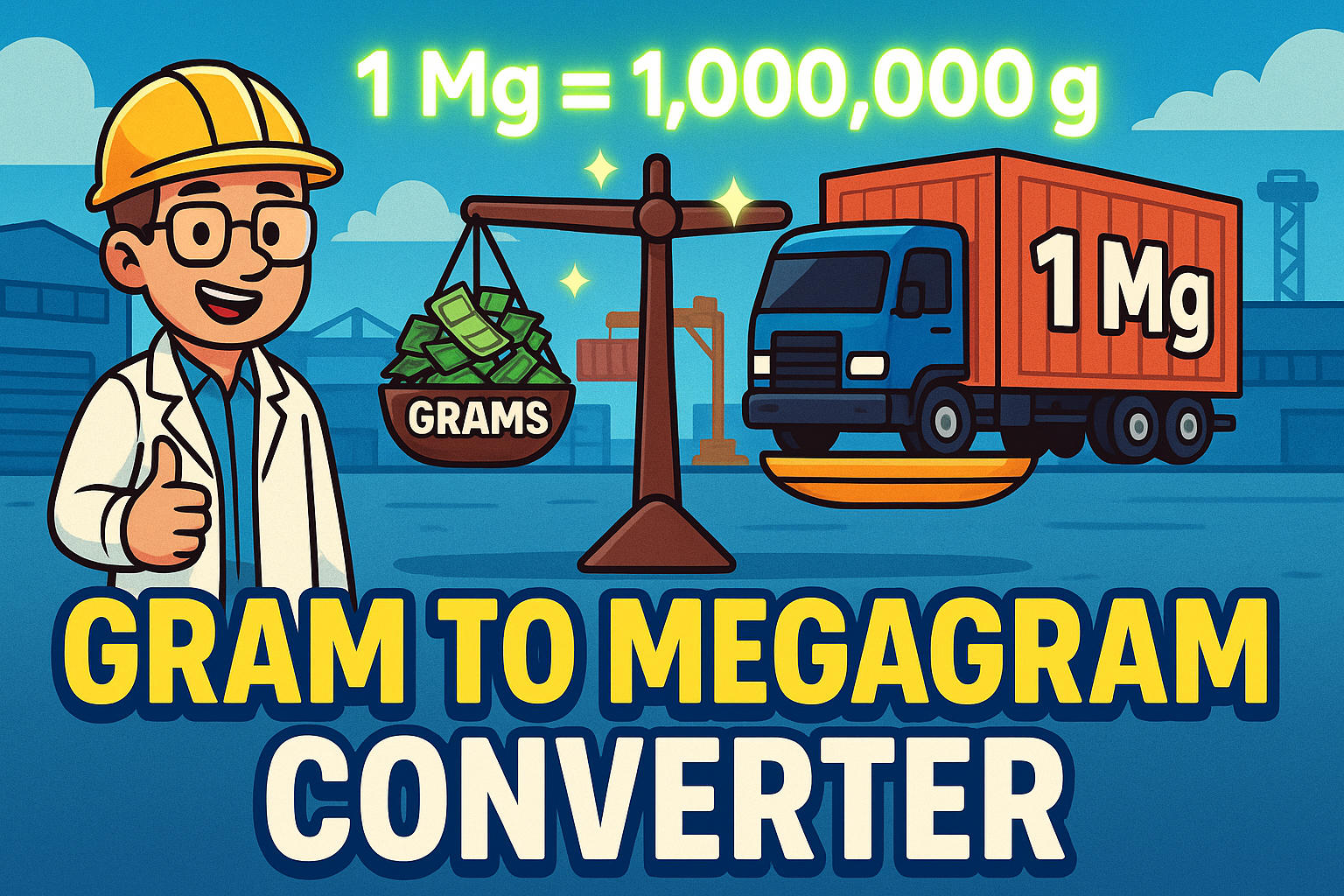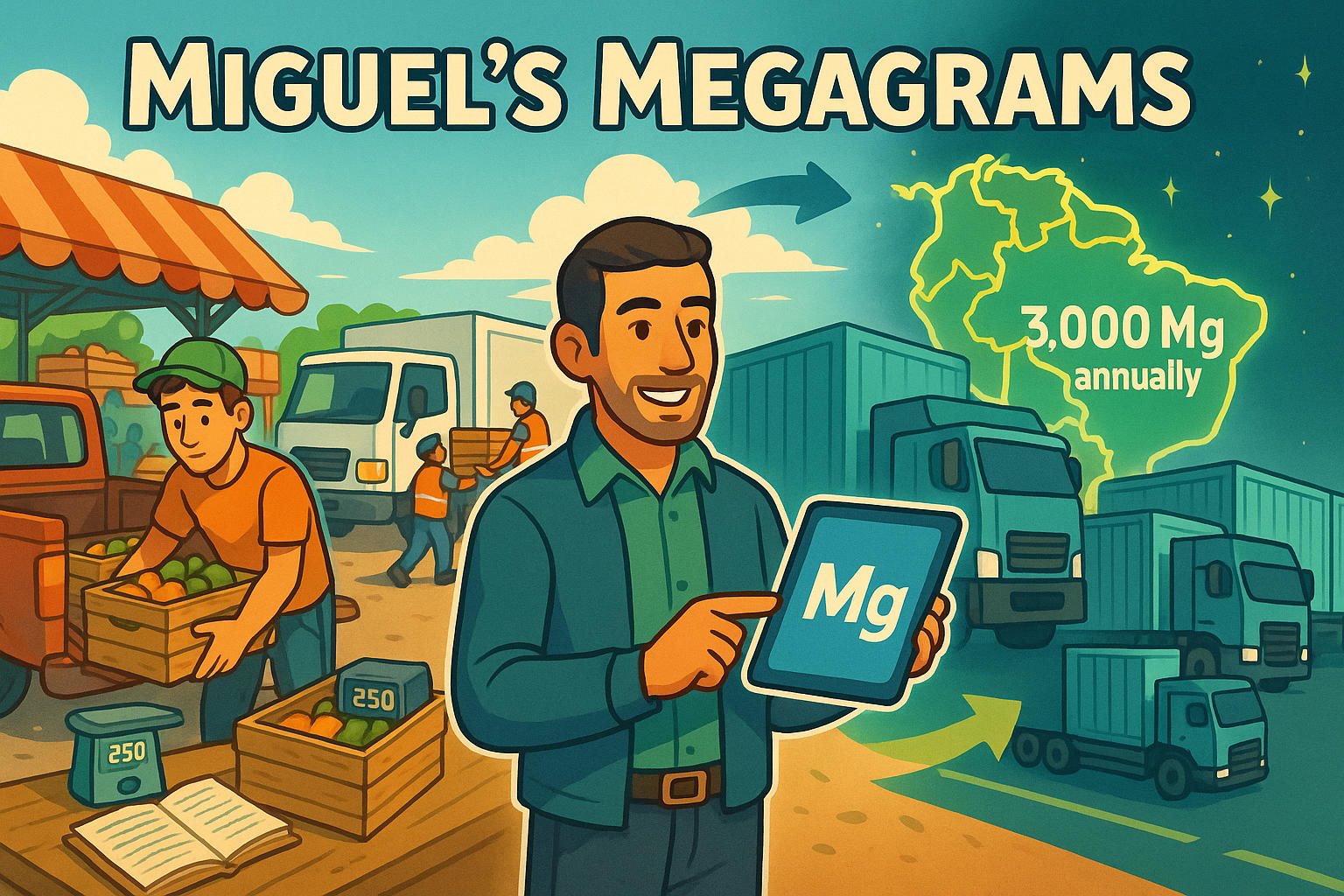gram to megagram – How to convert g to Mg
Need to convert grams to megagrams? Whether you're working in environmental science, logistics, or just curious about large metric units, converting grams to megagrams (g to Mg) is easier than it seems. This article breaks down everything you need to know about the units, the formula, and how this conversion is used in the real world.

A Gram and A Megagram
-
A gram (g) is one of the most widely used units of mass in the metric system. It’s a standard unit for measuring small to medium weights and plays a critical role in food packaging, medicine, science, and more.
-
A megagram (Mg) is a large metric unit of mass equal to 1,000,000 grams, or 1 metric ton. Though “megagram” is the official SI name, it is often referred to as a “tonne” in everyday contexts. It’s used to quantify heavy objects like vehicles, construction materials, or cargo shipments.
The conversion is quite straightforward:
Mg = g ÷ 1,000,000
Example: If you have 500,000 grams:
500,000 ÷ 1,000,000 = 0.5 Mg
Need help converting back? Try for the reverse.
Did You Know?
-
The tiny venom sac of a honeybee weighs about 0.1 grams—a microscopic detail with powerful biological function.
-
A single U.S. dollar bill weighs approximately 1 gram, making it a handy reference for small weights.
-
The Saturn V rocket’s first stage burned nearly 2,000 Mg of fuel in under three minutes during launch—equivalent to moving 2,000 small cars at once.
-
In forestry, one mature oak tree can produce 1.5 Mg of biomass in a year—making Mg essential in environmental modeling.
Miguel’s Megagrams
Miguel Santos was just 19 when he began hauling crates of fruit in the back of a rusty pickup through the markets of Mendoza, Argentina. Every load was weighed in grams, scribbled into ledgers, and often double-checked by hand. Business was small but steady—until demand exploded.
By his early 30s, Miguel was exporting citrus and avocados across South America. His trucks were full, his staff had tripled, and yet his records were a mess. It wasn’t until a government inspector asked for shipment reports in megagrams that Miguel realized the power of switching from small to scalable.
He digitized everything, taught his team to think in Mg, and restructured logistics. “Once we stopped counting grams and started thinking in megagrams, our growth accelerated,” Miguel told AgriLog Magazine.
Within a decade, Miguel's freight company was moving over 3,000 Mg of produce annually, tracking it all with real-time software and data-backed precision. What began with sacks of fruit and paper receipts became a cross-border empire—powered by scale, and built one megagram at a time.
For high-volume needs, browse our Conversion Tools collection.

Conclusion
While you might be used to grams in your kitchen or classroom, the gram to megagram conversion opens doors to industrial-scale thinking. With 1 Mg = 1,000,000 g, understanding this relationship is key in fields like logistics, environmental science, and engineering..
Want to explore other weight conversions? Try our Weight Converter for all measurement needs.

